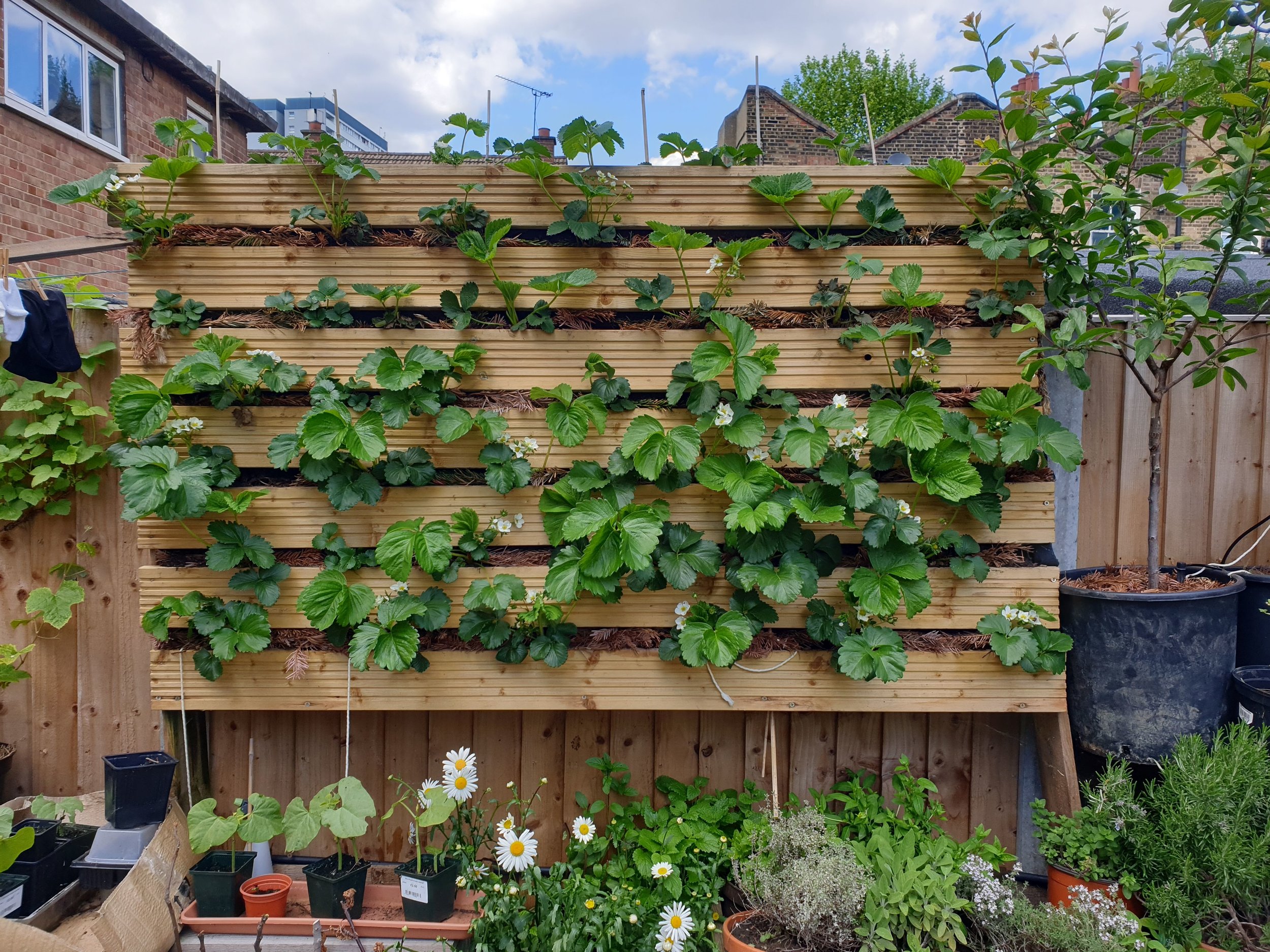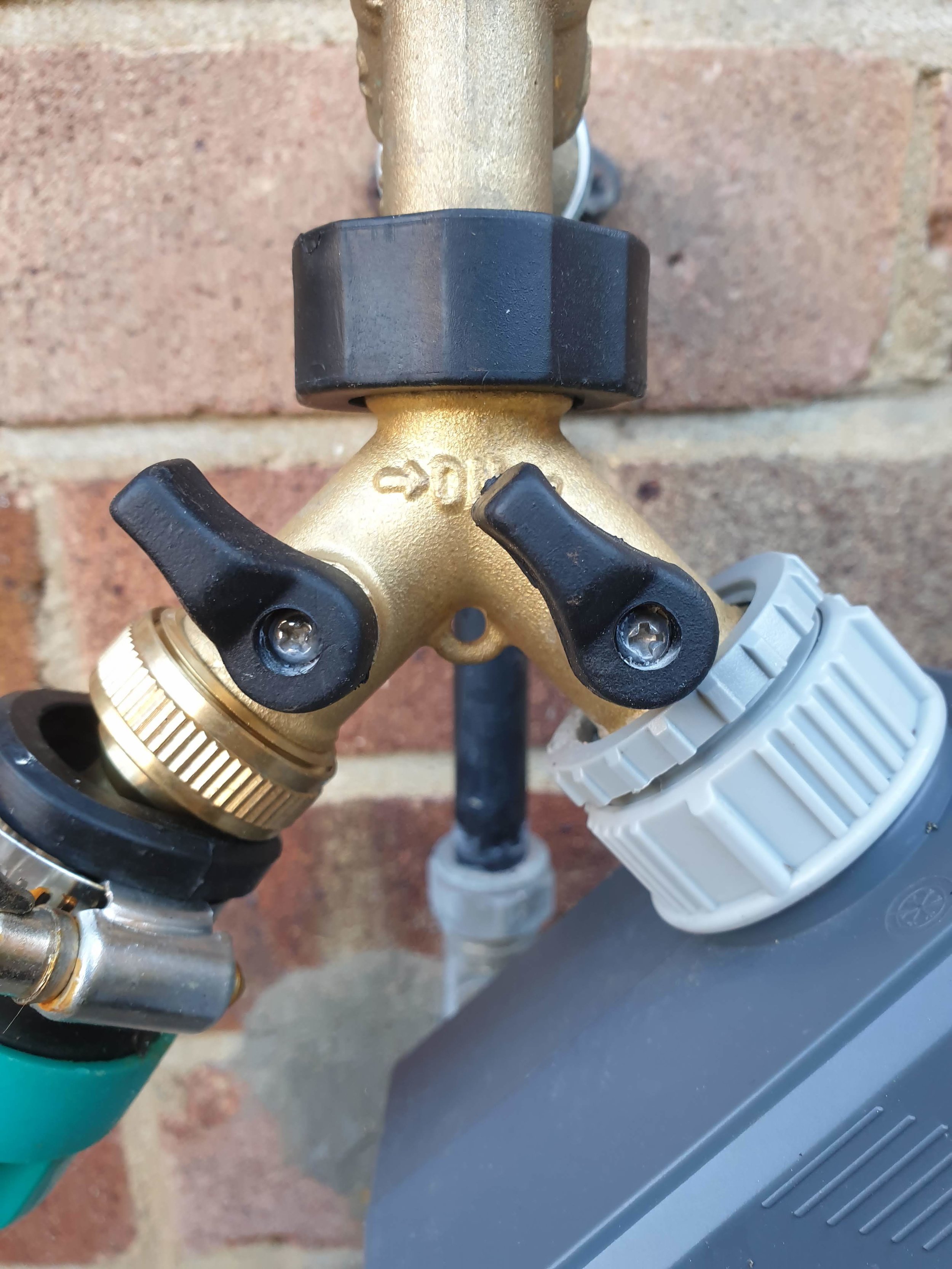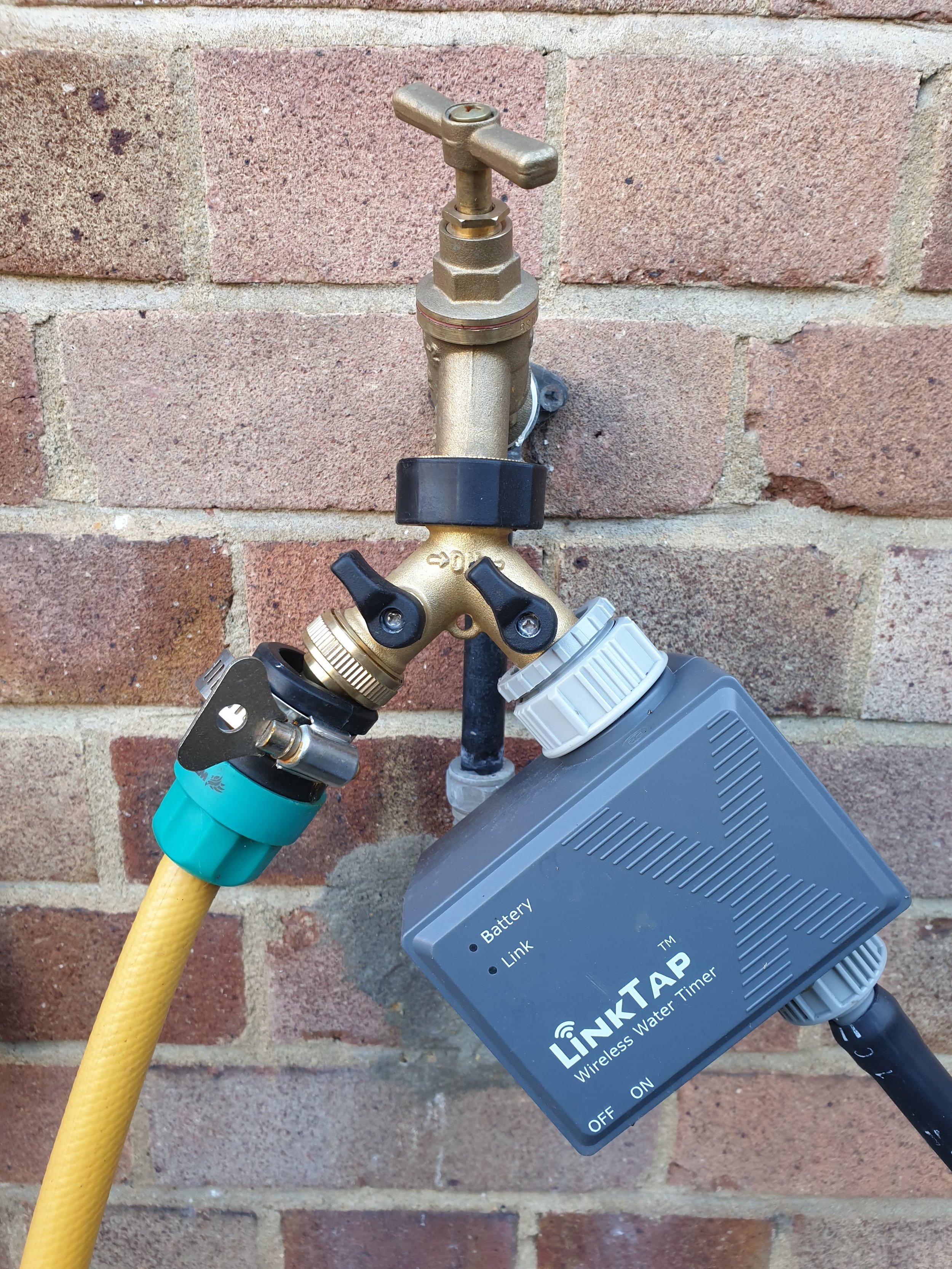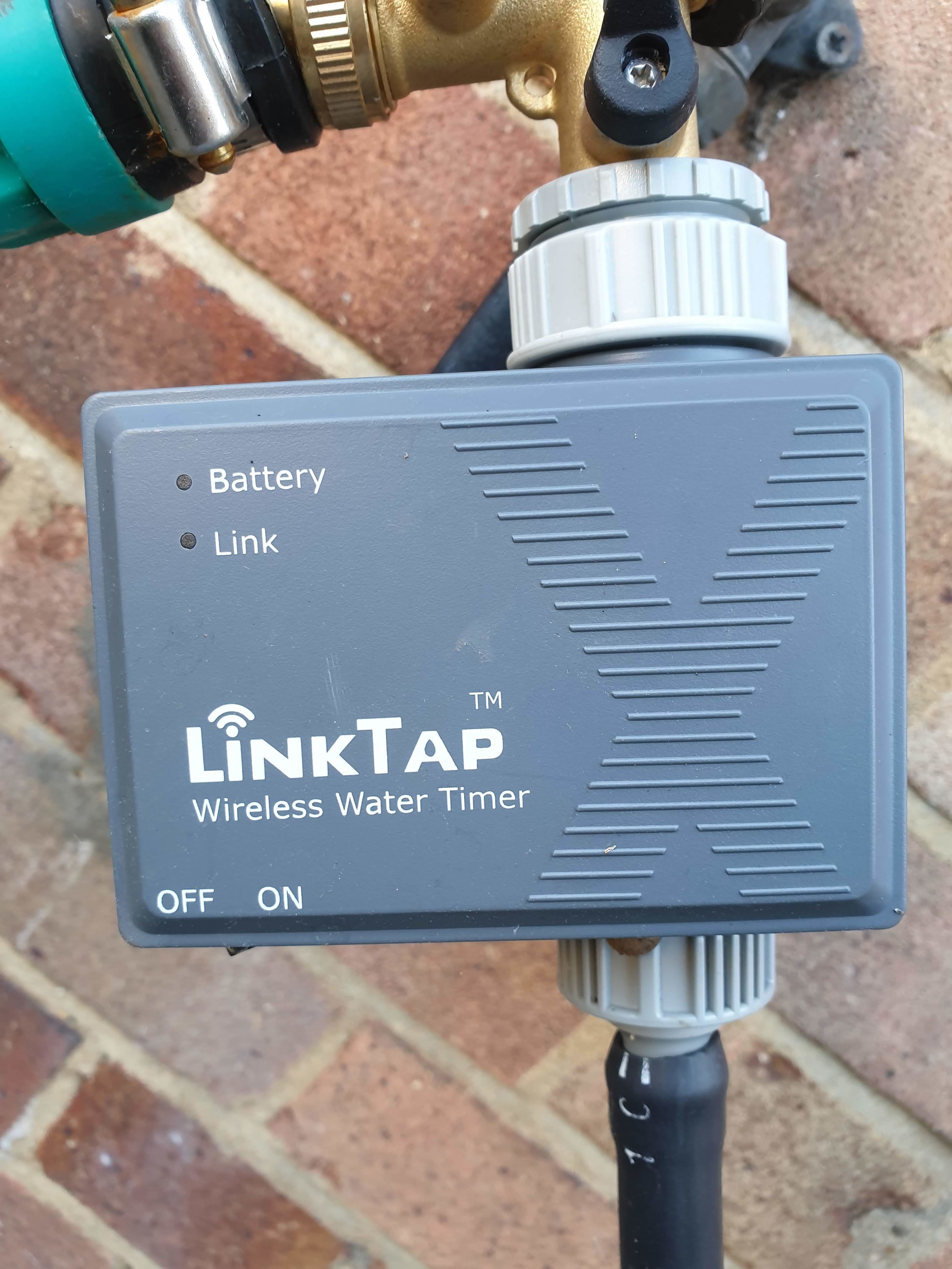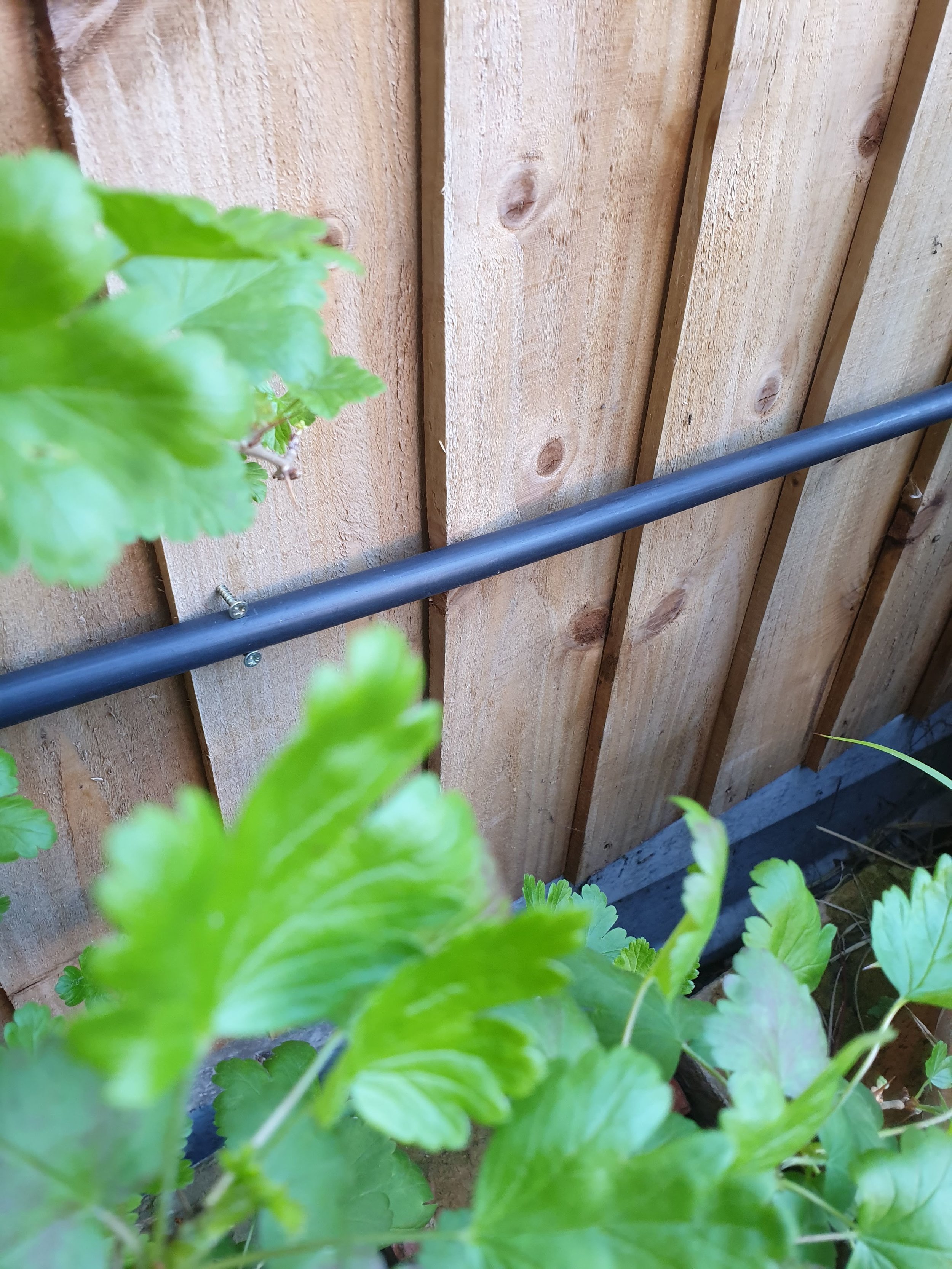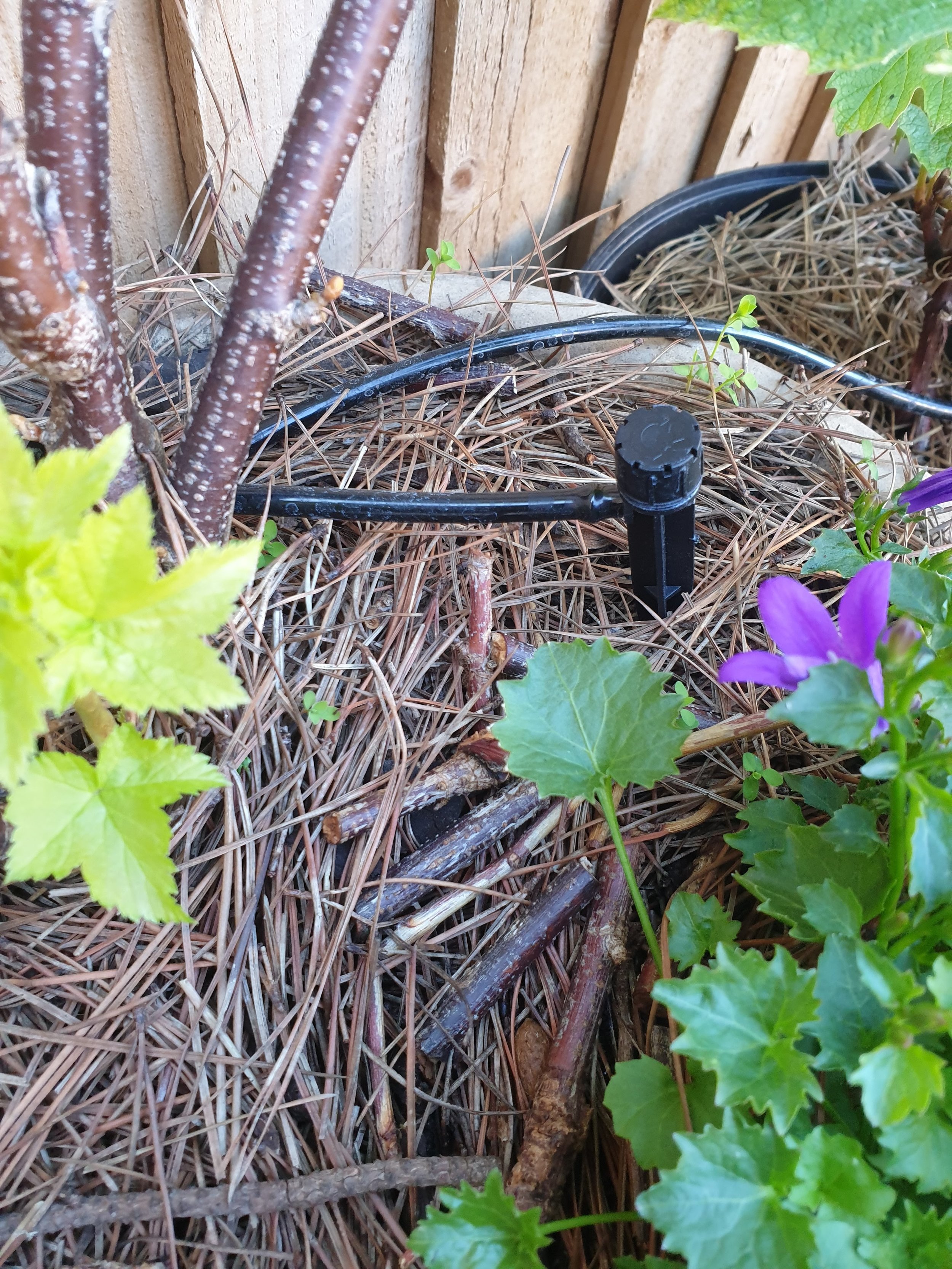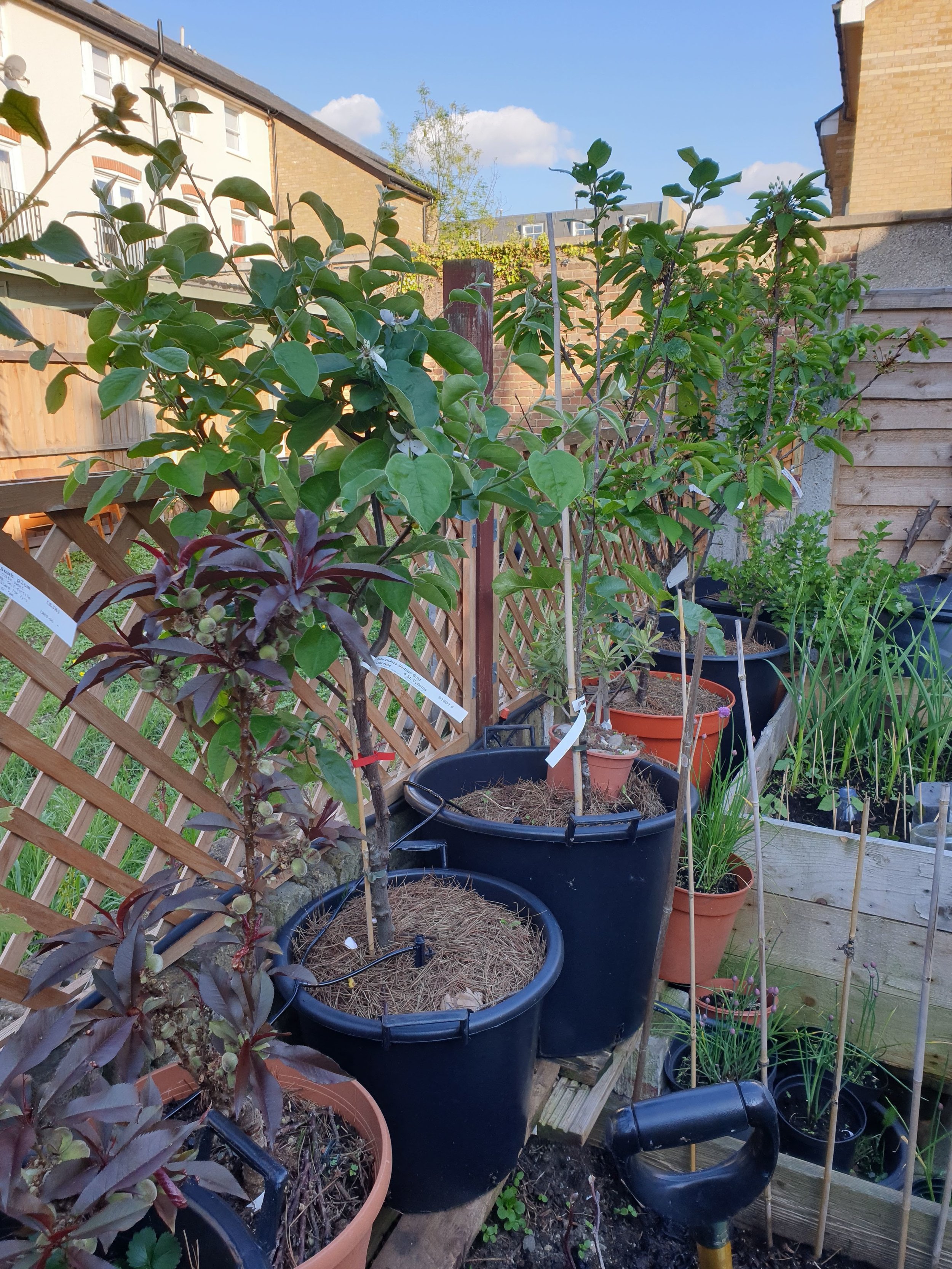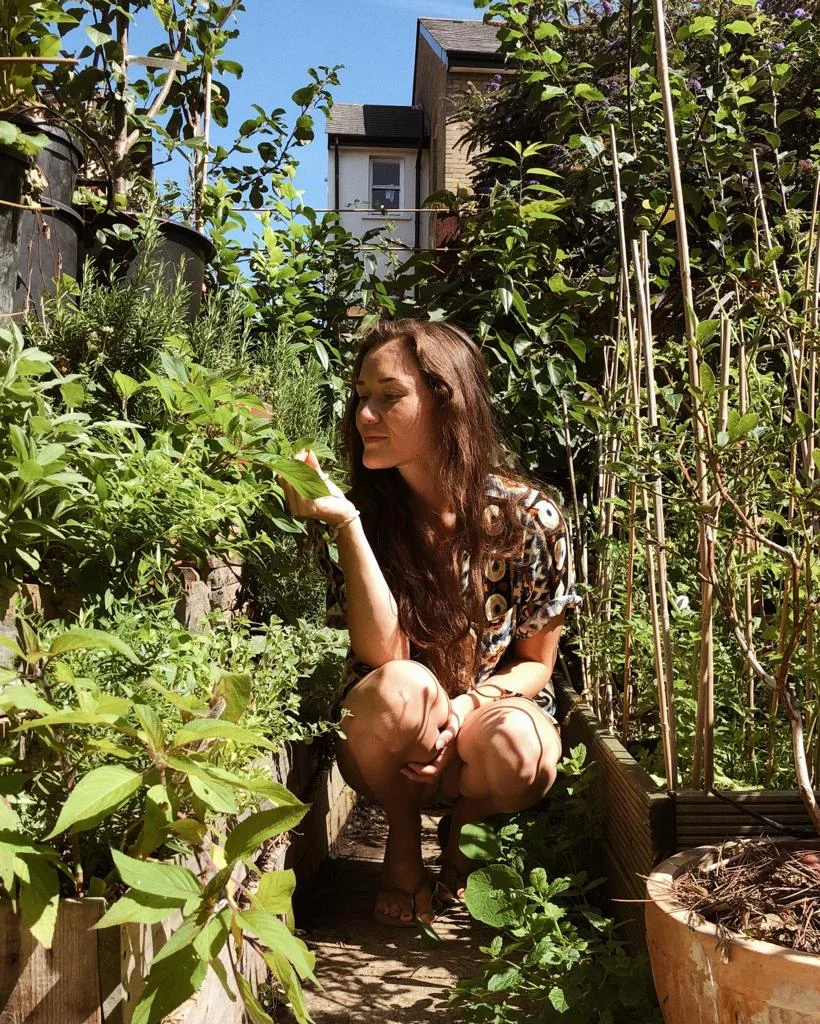Urban Gardening Project 2019: A Self-Watering System
Our Urban Garden
Last summer (2018) in London was one like no other in recent memory. From April to September it was hot - very hot! - with some days the temperature reaching over 30 degrees; for London, that’s special! We had summer weather for 5 months, which is unheard of. Usually, if we’re lucky, we’ll get two or three months of sun and warmth. Peppe & I worked on our urban gardening project throughout winter, spring, summer, and autumn, with a great harvest for our little space.
Above: Our vertical strawberry bed, which is fed by a pipe running up the side of it, releasing water through the drip connectors.
Last year, challenged ourselves to see how much food we could grow in our small urban garden, without a lot of space. You can find out more about how it went here - but we were really impressed with the trees that D.T Brown and Mr Fothergill’s sent us; we were shocked to see our patio peach tree actually bore fruit!
If you followed last year’s project, you will have seen that we focused a lot of our time growing annual vegetables. These are plants that grow during one growing season, produce fruit/flowers, and then die: potatoes, tomatoes, cucumbers, etc. Last year, the extra-hot weather meant we could grow a lot of heat-loving plants, and we had a bumper crop of tomatoes and cucumbers. But like most families in the UK, there were times when we weren’t at home to water everything. We occasionally visit my family a few hours away and stay for a few days and so, naturally, it means the garden doesn’t receive any TLC. This, sadly, was a problem as our small garden doesn’t have space for in-ground-grown plants, except for our main raised bed. Our young fruit trees - plum, cherry, peach, almond - faced a tricky summer, and the plum and cherry trees inevitable dropped their young fruit, due to the extra heat and under-watering. This was our fault!
2019’s Urban Garden Project - Irrigation
So how could we fix this? We toyed with all sorts of options: sprinklers, neighbours to help out, daily timers -but we eventually found one option that looked best, and we’re really happy with it so far.
LinkTap is an Australian-owned-and-operated company that focuses on gardening and environmental care. I suppose dry gardens are more of a problem in parts of Australia, so a brand like LinkTap has become a necessity there. LinkTap’s main focus is to help customers save money, reduce water usage, and provide a convenient way to tend a garden. LinkTap was exactly what we were looking for - an auto-watering system for the garden that doesn’t rely on a human presence in the house.
With conventional and low-cost tap timers, there’s still a risk of overwatering. Most of the budget timers are low-cost and low-tech, meaning they water on a daily basis regardless of raining conditions. For example, if we were away for 2 weeks in the Spring, the timer would switch on the tap every day at the same time for the same length. But what if there’s a week of storms forecasted? Not only would we be wasting money on water, we’d be killing our plants by overwatering. It’s a nice idea in practice, but not suited to an unpredictable British climate (unless it’s a heatwave, which only happens for a week or so each summer).
This is where LinkTap is different, as it’s controlled by a schedule created on your smartphone (it also links up to Google Home or Amazon Echo). Before I explain more about the LinkTap, here’s a bit more about why I was so keen to use it. I say “I”… this was all Peppe’s research and doing, as he’s the head gardener of the household! Zara is the main herb-sniffer, plucking all the rosemary, thyme, and dandelions, and exploring their scent. And Mango leaves the gift of poop in the garden. Thanks pup.
Automatic Watering System
This winter, Head Gardener and I established that we wanted to set up a self-timed watering system for our small urban garden in time for the summer. It would be set up by a main-line pipe/hose that would run around the perimeter of the small plot - it’s roughly 25ft x 18ft or 7.5m x 5.5m - with shoot-off smaller pipes running into beds and pots to deliver water directly to the places that it’s needed, therefore drastically reducing the amount of water consumption from the house and, in turn, water waste. To set this up, we needed to buy a few things. I’ve linked these below. Keep in mind that the below is enough for an urban garden of our size'; for larger plots, there are all sorts of things to think about, including back-flow, pressure, and more! For larger drip irrigation set ups, this website is very helpful!
A dual tap connector - this allowed us to connect the irrigation system, as well as run a general garden hose
A main-line hose - to run around the perimeter of the garden
Main-line mixed connections - to allow us to cut and connect the main line as needed
Drip system kit - to run off the main line
LinkTap system - this allowed us to link the whole system to the internet, and so to my phone
The above items allowed us to set up a wireless, automatic drip irrigation watering system. It’s possible to set up a watering system without the LinkTap, but it means someone would have to turn the tap on manually.
We’ve chosen to use the drip system over a sprinkling system as it delivers water directly into containers, leaving less water to evaporate in the air. It’s was very easy to set up, and you can rope in friends and family to help out build the custom set. Nozzles on the drip parts can be changed to allow them to drip heavily or spray a little bit to encourage root growth and spreading.
Above: Dual tap connector / Our dual tap connector set up with our regular hose + the LinkTap box / A close up of the functioning but dormant LinkTap.
We wanted to make sure that the garden would always be watered regardless of the weather - and if it rains heavily, we wanted a system that wouldn’t overwater and kill our vegetables and fruits.
The LinkTap system makes this all possible. We bought a full kit, which includes a Gateway and a Wireless Water Timer. The Gateway sits in your house, connects to your internet and speaks with your timer. The timer fixes onto your outdoor tap and, powered by batteries, it communicates with your Gateway, thus reading and acting upon your bespoke schedule set on your phone. The timer also connects to your hose or pipe, allowing water to flow once switched on. It’s battery powered, yes, but it goes into a dormant mode once connected to the Gateway, meaning you get as much ‘juice’ from it as possible.
The timer and Gateway retail at £115 - it’s quite a bit more than other similar products, but there are no other products on the market (in our research, anyway!) that do exactly what LinkTap does, to the accuracy that LinkTap does it. Once set up, the system communicates with your smart phone, allowing you to set up a number of watering modes - daily, as-and-when, weekly, and so on, including the rain-skip function, which detects when a certain amount of water has fallen into your garden, automatically skipping the next watering. Genius! In addition to this, the kit is very easy to set up with a step-by-step guide, and the LinkTap itself isn’t going to break down anytime soon, as its frame is robust. The pack comes with screwdrivers and an ethernet cable to hook up to your modem - the only thing needed for set up is batteries. Again, I’m acting like I could tell my ethernet cable from my modem… this was all Peppe.
Above: The main line that runs across the perimeter of the garden / The drip element placed in a single pot / A row of trees fed by the drip irrigation system.
The Cost Of Self-Watering
Our LinkTap system is now set up in our humble little garden, and is a godsend for our fruit trees. It’s a breath of fresh air knowing that we can go away for a week and the garden will water itself. In addition to this, we can keep track of how much water was delivered each day via the app, as well as an immediate reading of the weather where the LinkTap is.
So is the LinkTap worth the £115 fee? In short, yes. For £115 you get the LinkTap, and for an additional £50 you can buy most of the hosing and connectors for a drip irrigation system. This means reduced water usage, for a kit that should last at least 3-5 years (as long as you don’t damage any of it); the LinkTap should last longer. Splitting that (rounded-up) fee of £170 across 3 years is £57 a year, or over 5 years is £34 for the luxury of an automatic water system. If you want to break it down further, you could even say it’s between £2.85 and £4.75 a month for your own self-watering system. We’re happy to spend those fees, as the garden is a space we spend a lot of our summer time in, plus the time saved daily in the peak of summer is invaluable - that’s roughly 5-20 minutes daily, 35 mins - 2 hours 10 mins weekly, or 2 hours 30 minutes to 7 hours monthly!
Above: Screenshots of the app show that amount of detail you get as well as flexibility in your watering.
As mentioned, last year, after our fruit dropped prematurely (due to lack of watering), we decided to try again. Mr Fothergill’s sent us a range of spectacular patio trees - perfect for our sized garden and for pots, and an ideal partner to test the LinkTap on. I’ll explain more about these in a future blog post.
Have you ever tried to set up a self-watering garden? Let me know if you try out the LinkTap!
Thanks for reading.


